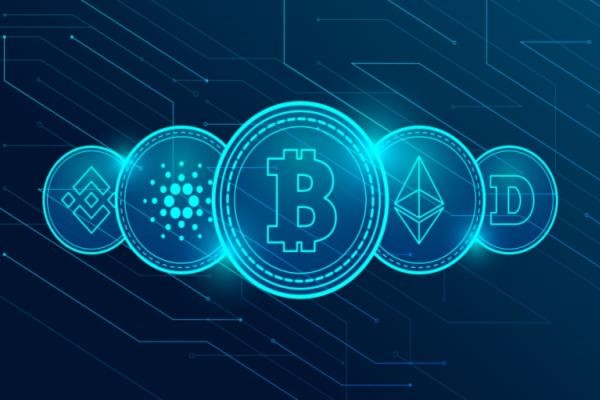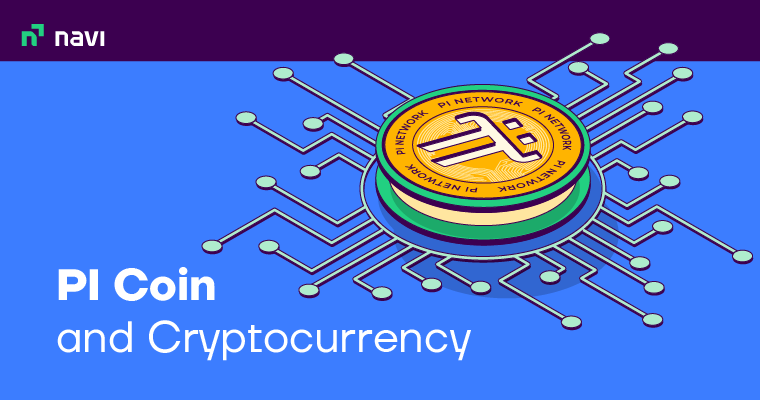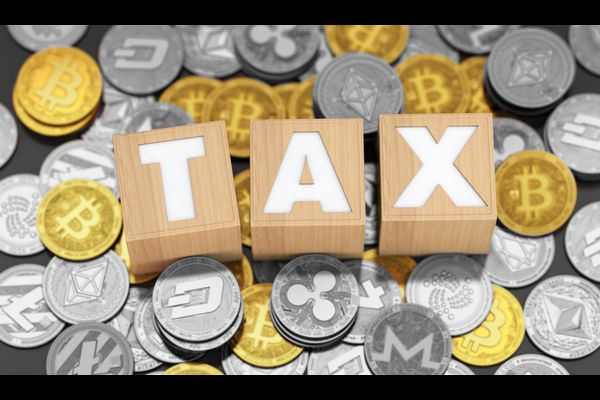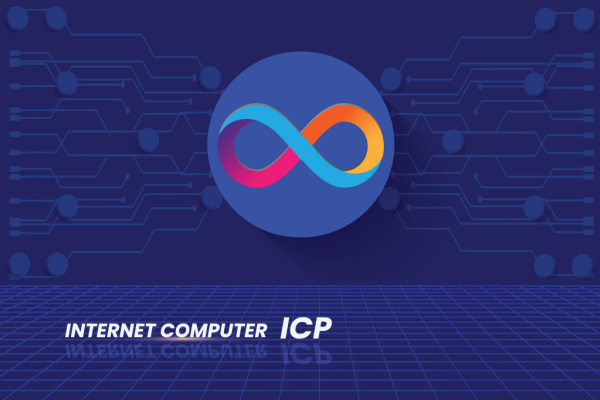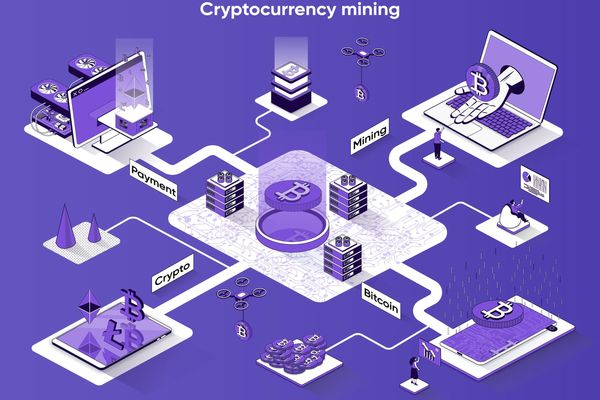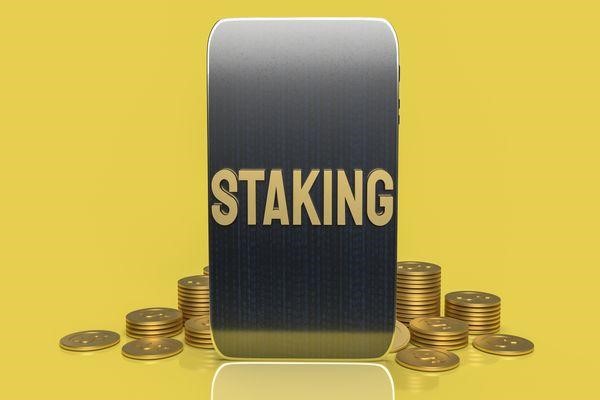What Is Stablecoin? Types, Importance And Popular Stablecoins
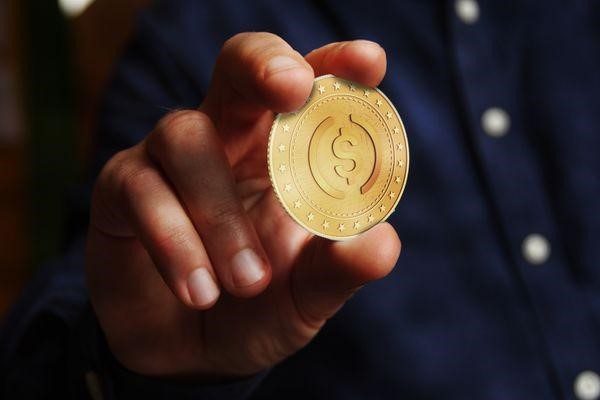
Cryptocurrencies are a type of digital currencies that tend to be highly volatile. The reason for this turbulence is the lack of backing from an underlying asset like gold, fiat currency, etc. This is where stablecoins can help in reducing volatility. Investors looking for a more stable currency for transactions may prefer to buy stablecoins. They have the backing of an underlying asset (US Dollars or gold). Read on to know more about these virtual currencies!
What is a Stablecoin?
Charles Hoskinson and Dan Larimar launched these during the early days of cryptocurrencies, i.e. 2014. The first stablecoin was BitUSD, and it was functioning on the BitShare blockchain. These are unique in the sense that they are pegged to assets like fiat currencies or precious metals. These tokens track the prices of those real-world assets and behave accordingly.
Stablecoins work on the principle of having an equal amount of real assets in a vault or collateralised other cryptocurrencies. Whenever a stablecoin holder wants to exchange their tokens for cash, these reserves are used to pay the amount.
Let us suppose that developers have mined and released around 10 million units of stablecoin cryptocurrency. Then, these will be backed or tied to $10 million stored in a secured bank vault. If a user wishes to cash their coins, the same amount of assets will be removed from the banks.
Types of Stablecoins
Here are the types of stablecoins:
1. Fiat collateralised stablecoins
Stablecoins pegged to fiat currencies like US Dollars, Euro, Pounds, Yen, etc., come under fiat-collateralised stablecoins. These are the most popular form of stablecoins as they are easy and simple to understand.
All of these tokens are in a 1:1 ratio, meaning that one unit of this cryptocurrency has the backing of one unit of these currencies. A bank’s secured value stores these currencies as reserves.
Whenever a user wants to cash out their tokens, the corresponding amount of currency is taken out of bank accounts and transferred to the user’s wallet or account. They can then encash the same. When the stablecoins are redeemed, they are either burnt or removed from circulation.
These tokens are highly popular among new crypto investors as they are based on a simple mechanism. Moreover, the backing of real assets reduces their volatility. These coins may not see large-scale fluctuations if the country whose currency they are following has a stable outlook.
However, if there is economic turbulence in that country or fiat currency, there may be fluctuation in their value.
2. Commodity oriented stablecoins
The second type of stablecoins includes those with the backing of a commodity asset class. These can be precious metals like gold, silver, oil and real estate. However, the most common type of commodity-backed stablecoins is the ones that are pegged with gold.
Ownership of these stablecoins gives its users access to a host of tangible assets like gold and real estate. As these commodities have a great scope of increase in their value over time, investments in stablecoins can be very profitable. An increase in the price of the underlying commodity will also increase the value of these tokens.
Many people have started taking a keen interest in commodity stablecoins because of the high return potential and expensive assets associated with them. An example of this category of stablecoins is Digix Gold which runs on Ethereum blockchain technology.
Each unit of Digix Gold has a backing of 24K one gram gold. Other coins include Tiberius Coin and the Swiss Real coin. The former has the backing of seven different varieties of precious metals, and the latter has the backing of the Swiss real estate industry.
3. Crypto collateralised stablecoins
This is a complex but efficient class of stablecoins. The backing of various cryptocurrencies brings a degree of decentralisation to these crypto-backed coins. They are always over-collateralised so as to manage the price fluctuations that may occur in these tokens.
Suppose $500 worth of a stablecoin has the backing of $1000 worth of Bitcoins. This means that there is collateralisation of about 200%, which covers the risk of a 20% drop in prices. If the prices drop by 20%, you may still have $500 of stablecoins but backed by $800 worth of Bitcoins. If the prices fall down further, these stablecoins may be subject to liquidation.
The decentralisation feature of these tokens can bring about more transparency in the process. This can provide greater control of their assets to the users. There are many crypto-backed coins which have the backing of more than one cryptocurrency. It enhances the risk resilience of stablecoins and brings about more liquidity in the entire ecosystem.
4. Algorithmic stablecoins
These tokens are not backed by any real-world asset, unlike other types of stablecoins. However, they are tied to a certain algorithm that controls their supply. They offer a very high degree of decentralisation for the users.
In case of the high demand for these stablecoins, algorithms mint new coins so as to reduce the price level. On the other hand, in case of low demand, some coins are purchased from the market, which will stabilise the tokens in circulation.
These non-collateralised tokens may not offer liquidity, and as they do not have any backing of real-world assets, algorithmic stablecoins are highly risky digital currencies.
Also Read: Altcoins: Types, How They Work & How To Invest
Importance of Stablecoins
The most important benefit of stablecoins is that they offer a great degree of stability and protect investors from high volatility. Their backing by assets has helped negate aspersions of prospective investors. It has given this class of cryptocurrencies a sense of credibility and a wider acceptance.
Another benefit of stablecoins is that they offer a high degree of decentralisation. This feature gives more control to the investors and removes interference by any intermediary.
You will receive tangible assets like precious metals, real estate, fiat currencies, etc., when you want to redeem or encash your investments. Thus, stablecoins provide some real-world value for your digital investments.
Most Popular Stablecoins
The following list of stablecoins which are currently highly popular among crypto enthusiasts:
Diem
Diem, or Libra as it is popularly known, is a stablecoin which was supposed to be launched by the social media giant Facebook. It is one of the most anticipated stablecoin in the working.
This coin would have been backed by a number of fiat currencies such as US Dollar, Euro, British Pound, etc. However, due to multiple regulatory hurdles, they changed their plans to create multiple stablecoins, each backed by a different currency. Facebook is working on launching Diem at the earliest, but the launch has not been finalised yet.
Tether
Tether launched a stablecoin named USDT in 2014, making it one of the oldest stablecoins in the market, with a very large market capitalisation. Investors use these tokens to move their money between different exchanges and take advantage of arbitrage opportunities.
These have backing of US Dollars and originally used to function on the Bitcoin blockchain but lately have started functioning on Ethereum-backed blockchain as well.
USD Coins
USD Coins or USDC is a joint venture between the Circle and Coinbase crypto firms. It is another type of stablecoin tied to the US Dollar. Now, the company has started diversifying collateral assets by using a mix of different currencies. The total market capitalisation of these tokens is more than $26 billion, and analysts expect it to touch $190 billion in the coming years.
Dai
Dai is running on the Ethereum blockchain as per the MakerDAO protocol. It is tied to the US Dollars, but the collateral in these are Ethereum tokens, so you will receive Ethereum coins in case you wish to redeem your investment.
The main focus of Dai tokens is decentralisation, and hence, Ethereum smart contracts regulate their supply. It is a code of written rules which cannot be changed or reversed.
These are some of the most popular stablecoins available for trading and investment. You can go to multiple exchange platforms to start your investment journey.
Things You Can Do with Stablecoins
You can do a number of things with stable crypto coins, which are as follows:
- Mitigate the effects of volatility: As stablecoins have the backing of a tangible underlying asset, they are less volatile than other cryptocurrencies. It gives the risk-averse investors a safer investment option. You can invest some amount in these tokens and use this as a hedge against other high-risk investments that you make.
- Get higher returns: Investors have an opportunity to earn high returns on these coins as compared to other investment options. You can make a very small amount of initial investment, and it can grow to become a large corpus over time.
- Pay lower expenses: These coins allow users to transfer money easily with very low transfer charges like processing fees, handling charges etc. Holders of stablecoins can even make transactions worth millions by paying nominal or low fees.
Risks Associated with Stablecoins
Some risks associated with stable crypto coins are as follows:
- Trading risks: Various trading platforms offer these coins. However, there are some security risks involved with the platform itself. Any vulnerability of these platforms can be exploited by hackers or anti-socials, thereby making your investments prone to theft.
- Lack of confidence: Cryptocurrencies are a new form of investment, and even though stablecoins have backing of a real asset, there is still a problem of lack of confidence among a large number of investors. A crowded field of cryptocurrencies has exacerbated these aspersions.
- Regulatory risks: Many central banks are looking at tightening the rules governing these assets. Hence there is a lot of uncertainty regarding the future outlook of stablecoins. There are high chances of incurring heavy losses in case of adverse regulatory policy announcements.
Future of Stablecoins
Stablecoins have gained immense popularity in a very short span of time. Their reduced volatility has attracted even sceptical investors. There has been a rising demand for these coins across the world, especially in Western nations.
However, these coins have not been exempt from controversies. Many regulatory bodies and central banks have started preparing to bring these digital assets under the purview of regulation and monitoring. There are a lot of uncertainties regarding them in terms of regulation and management.
Therefore, if you are planning to invest in these stablecoins, you must conduct thorough market research and take into account all regulatory risks.
Also Read: Ripple 101: A Beginner’s Guide To Ripple And Its Cryptocurrency XRP
Final Word
Stablecoin crypto assets can be a suitable crypto investment for someone looking for a higher degree of certainty. However, investors must put in their money after considering all the risks and costs. This detailed guide will help you in making an informed investment decision.
FAQs on Stablecoins
Ans: You need to follow these steps to buy a stablecoin:
Step 1: Sign up on a crypto exchange platform.
Step 2: Complete the KYC formalities.
Step 3: Select the stablecoin that you wish to buy.
Step 4: Transfer funds from your bank account to your crypto wallet.
Step 5: Click on the buy option, and you are the proud owner of these stablecoins.
Ans: From 1st April 2022, all virtual currencies, including stablecoins, are subject to taxation as per Income Tax Act, 1961. The rate of taxation is 30% on the earnings from these currencies. Additionally, from 1st July 2022, all crypto transactions are subject to TDS deductions at the rate of 1%.
Ans: Crypto stable coins have the backing of a number of underlying assets like fiat currency, precious metals, real estate, different cryptocurrencies, as well as other investments like commercial paper.
Before you go…
- Looking for instant 🚀 personal loans 24*7 anywhere, anytime? Get personal loans up to ₹20 lakh starting at 9.9% p.a. Install the Navi app now!
- Or, maybe you’re looking to buy that house you’ve been eyeing 🏠 and you need a loan of up to ₹5 crore. Install the Navi app now and get instant in-principle approval right away! Interest rates starting at 8.60% p.a.
- How about an affordable health insurance policy 👨⚕️ starting at a monthly premium of just ₹235? Install the Navi app now and get your policy in under 2 minutes.
- Instead, want to put your savings into action and kick-start your investment journey 💸 But don’t have time to do research. Invest now with Navi Nifty 50 Index Fund, sit back, and earn from the top 50 companies.
Disclaimer: Crypto products and NFTs are unregulated and can be highly risky. There may be no regulatory recourse for any loss from such transactions.
Mutual Fund investments are subject to market risks, read all scheme-related documents carefully.
This article has been prepared on the basis of internal data, publicly available information and other sources believed to be reliable. The information contained in this article is for general purposes only and not a complete disclosure of every material fact. It should not be construed as investment advice to any party. The article does not warrant the completeness or accuracy of the information, and disclaims all liabilities, losses and damages arising out of the use of this information. Readers shall be fully liable/responsible for any decision taken on the basis of this article.

Customer’s Feedback
No comments found.Top 10 Cryptocurrencies to Invest In 2023 – Best Cryptocurrencies In India
Cryptocurrency is a digital currency which can be used to purchase goods and services without the u... Read More »8 Top Crypto Exchanges in India – Best Crypto Exchanges 2023
Crypto assets are attracting more and more traders to explore the possibilities of their rising mar... Read More »What is Crypto Airdrop – Its Types, Taxation, Benefits and How Does it Work?
Crypto Airdrop is among one of the key strategies that have grown extremely popular since 2017 in t... Read More »What is Pi Cryptocurrency: Network, Value, Price and Future
The Pi Coin cryptocurrency has made the mining of digital currencies accessible for crypto enthusia... Read More »What Is Tax On Crypto In India And How It Is Calculated
Cryptocurrencies are decentralised digital currencies or assets based on blockchain technology, whi... Read More »What Is Internet Computer Protocol (ICP) – Its Price, Investment Benefits And Uses
The ICP crypto is the native token of the ICP Blockchain network, which is used to reward the users... Read More »What Is A Crypto Mining Rig – Its Setup, Types and How To Build One
A Crypto mining rig is a customised personal computer. It features all the essential elements of a ... Read More »Polygon(MATIC): How Does It Work, Benefits and Price Prediction
Polygon (MATIC) is a scaling solution for Ethereum, and MATIC is the name of the token that powers ... Read More »What is GALA Crypto: Review, Benefits and How to Buy GALA Coins?
GALA is an Ethereum-based cryptocurrency that powers Gala Games, a play-to-earn gaming platform. Th... Read More »What is Bullish Engulfing Pattern – its Importance in Trading
Trading in stocks is challenging. That’s why traders use several technical analysis tools, like c... Read More »What is 1inch Crypto – How Does it Work and How to Buy it?
The 1inch protocol is a decentralised exchange (dex) aggregator. Dex is a peer-to-peer (buyers and ... Read More »What is Staking Crypto and How does It Work?
Staking crypto means pledging your cryptocurrencies to the blockchain network to confirm trans... Read More »Top 10 Chit Fund Schemes in India in 2023
Chit funds are one of the most popular return-generating saving schemes in India. It is a financial... Read More »10 Best Gold ETFs in India to Invest in April 2023
Gold ETFs or Gold Exchange Traded Funds are passively managed funds that track the price of physica... Read More »10 Best Demat Accounts in India for Beginners in 2023
Creation of Demat accounts revolutionised the way trades were conducted at the stock exchanges. It... Read More »20 Best Index Funds to Invest in India in April 2023
What is an Index Fund? An index fund is a type of mutual fund or exchange-traded fund (ETF) that... Read More »Best Arbitrage Mutual Funds to Invest in India in April 2023
Arbitrage funds are hybrid mutual fund schemes that aim to make low-risk profits by buying and sell... Read More »10 Best SIP Plans in India to Invest in April 2023
What is SIP? SIP or Systematic Investment Plan is a method of investing a fixed amount in ... Read More »10 Best Corporate Bond Funds in India to Invest in April 2023
Corporate bond funds are debt funds that invest at least 80% of the investment corpus in companies ... Read More »10 Best Bank for Savings Account in India [Highest Interest Rate 2023]
Savings account is a type of financial instrument offered by several banks. It lets you safely depo... Read More »










